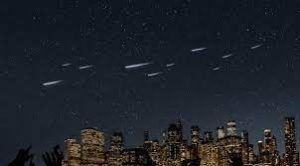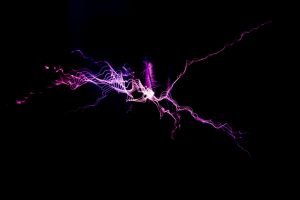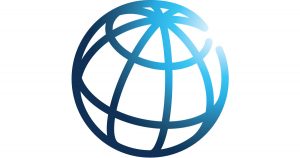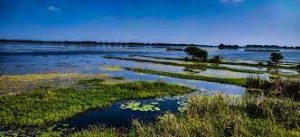Today’s Current Affairs: 1st Apr 2023 for UPSC IAS exams, State PSC exams, SSC CGL, State SSC, RRB, Railways, Banking Exam & IBPS, etc
Table of Contents
Project Sky Canvas:

A Tokyo-based space company, ALE, recently announced that it will create the world’s first artificial meteor shower in 2025 under the project Sky Canvas.
- Sky Canvas Project is the world’s first artificial meteor shower project.
- The aim of the project will be to collect atmospheric data in the mesosphere.
- Under this project, meteor-replicating particles will be installed in a satellite 250 miles (400 km) up and then released over a designated area.
- These metallic particles will be spheres with a diameter of 0.4 inches (1 cm) and a mass of a few grams.
- The pea-sized balls have a secret chemical formula that causes them to light up from the friction of re-entry at speeds of up to five miles (8km) a second.
- ALE says they will travel more slowly and light up for longer than natural shooting stars – up to ten seconds each.
- They will be visible over a 125-mile (200 km) area.
- The ingredients in the pellets can be altered to change the colour, which means that a multi-coloured flotilla of shooting stars could be created.
Evidence Of The Piezoelectric Effect In Liquids:

Scientists have reported evidence of the piezoelectric effect in liquids, for the first time.
- Piezoelectric effect is a phenomenon where specific types of material produce an electric charge proportional to the mechanical stress applied to them.
- It was first time discovered in 1880, in quartz.
- Quartz is the most famous piezoelectric crystal. Quartz is silicon dioxide (SiO2).
- The quartz crystal consists of silicon and oxygen atoms at the four vertices of a three-sided pyramid; each oxygen atom is shared by two pyramids. These pyramids repeat themselves to form the crystal.
- When mechanical stress is applied the position of the charge is pushed further from the centre, giving rise to a small voltage. This is the source of the effect.
- It is used in this capacity in analog wristwatches and clocks.
- Such crystals are also used in cigarette lighters, electric guitars, TV remote controls, audio transducers, and other instruments where converting mechanical stress to a current is useful.
- This effect has only been expected in solids thus far because the body being squeezed needs to have an organised structure, like pyramids of quartz.
EOS-06 Satellite : Released Images Of Earth

The Indian Space Research Organisation (ISRO) has recently released a Global False Colour Composite (FCC) mosaic of images captured by the Ocean Colour Monitor (OCM) payload on board the EOS-06 satellite.
- The OCM senses the Earth in 13 distinct wavelengths to provide information about global vegetation cover on land and ocean biota for global oceans.
- EOS-06 satellite is the third-generation satellite in the Oceansat series.
- This is to provide continuity services for Oceansat-2 spacecraft with enhanced payload specifications as well as application areas.
- Objectives of the Mission is :
- to ensure the data continuity of Ocean colour and wind vector data to sustain the operational applications.
- to improve the applications, some additional datasets such as Sea Surface Temperature and more number of bands in the Optical region for fluorescence and in the Infrared region for atmospheric corrections are accommodated.
- to develop/improve related algorithms and data products to serve in well-established application areas and to enhance the mission utility.
- The EOS-06 is envisaged to observe ocean color data, sea surface temperature and wind vector data to use in Oceanography, climatic and meteorological applications.
Falling Long-Term Growth Prospects: World Bank

The World Bank (WB) has released a report titled “Falling Long-Term Growth Prospects: Trends, Expectations, and Policies”, stating that the current decade (2020-2030) could be a lost decade for the whole world.
- The report uses a comprehensive database of multiple measures of potential growth.
- It examines trends in potential growth and its drivers, global and regional prospects for potential growth and investment over the 2020s, and a range of policy options to lift potential growth.
Findings of the Report:
- Nearly all the economic forces that drove economic progress are in retreat.
- There has been a protracted, broad-based decline in potential growth and its underlying drivers.
- The slowdown in potential growth is expected to persist for the rest of this decade.
- A decline in long-term growth prospects imperils the ability of Emerging Market and Developing Economies (EMDEs) to combat poverty, tackle climate change, and meet other key development objectives.
Corporate Debt Market Development Fund:

The Securities and Exchange Board of India (SEBI) has introduced the ‘Corporate Debt Market Development Fund’ to prevent financial crisis.
- The ‘Corporate Debt Market Development Fund (CDMDF) is a backstop facility for specified debt funds during market dislocations.
- The fund is intended to provide liquidity support in the event of a financial crisis.
- It aims to instil confidence amongst the participants in the corporate bond market and to generally enhance secondary market liquidity.
- The proposed CDMDF will have an initial corpus of Rs 3,000 crore contributed by mutual funds.
- The government has approved a 10-time leverage of the fund (Additional corpus), thus CDMDF may raise funds up to Rs 30,000 crore.
- Contributions to the fund can be done by the specified debt-oriented mutual fund schemes and asset management companies of mutual funds.
- This fund is guaranteed by the National Credit Guarantee Trust Company (NCGTC) and the backstop facility will be managed by SBI Mutual Fund.
- Specified mutual fund schemes will have access to the fund for selling securities during market dislocation.
- This access is proportional to the contribution made to the fund at a mutual fund level.
Power Generating From Defunct Gold Mines:

An Australian renewable-energy company Green Gravity has proposed a scheme to generate electricity from the defunct Kolar Gold Fields (KGF), in Karnataka, using Low-Tech Gravity Technology.
- The plan is to find defunct mines, which often go hundreds or thousands of meters deep, and haul a Weighted Block, that may be around 40 tonnes, up to the top of the mine shaft using renewable power during the day.
- When backup power is required, the heavy block will fall, under gravity, and the ensuing momentum will power a generator via a connected shaft (or rotor).
- The depth to which the block can slip can be determined via a braking system, thus giving control on the amount of power that can be produced.
- This is similar to the pumped hydropower storage method, where water is pumped uphill electrically into a reservoir, and then released downhill to move a turbine and generate electricity as needed, as in a hydroelectric power plant.
- Kolar Gold Fields (KGF) is a mining region located in the Kolar district of Karnataka.
- It is known for its historic gold mines, which were among the deepest in the world.
- Mining in KGF was started by Jhon Taylor & Sons in 1880.
- The mines remained active for 121 years before it experienced an unsystematic closure on February 28, 2001. The mines were closed owing to high operational costs and low revenues.
National Contribution To Warming : India Ranking

The research published in the journal “Scientific Data’ ranked India fifth among the top 10 contributors to global warming.
Key Highlights of the Report:
- Top Contributor: The United States topped the list with its emissions causing 0.28°C (17.3%) of rise in temperature.
- China stood second and Russia took third place.
- India’s Position: Since 2005, India climbed to the fifth spot from the 10th.
- India is responsible for 0.08 degrees Celsius of warming from the 1850s through 2021.
- India’s emissions of carbon dioxide (CO2), methane (CH4) and nitrous oxide (N2O) from 1851-2021 have resulted in 0.04°C, 0.03°C and 0.006°C of global warming over pre-industrial levels, respectively.
Salt Marshes : Recent Study

Recent studies show that more than 90% of the world’s salt marshes may soon succumb to sea level rise.
- Salt marshes are coastal wetlands that are flooded and drained by salt water brought in by the tides.
- They are marshy because the soil may be composed of deep mud and peat.
- Peat is made of decomposing plant matter that is often several feet thick.
- Peat is waterlogged, root-filled, and very spongy.
- Because salt marshes are frequently submerged by the tides and contain a lot of decomposing plant material, oxygen levels in the peat can be extremely low a condition called hypoxia.
- Hypoxia is caused by the growth of bacteria which produce the sulfurous rotten-egg smell that is often associated with marshes and mud flats.
- Salt marshes occur worldwide, particularly in middle to high latitudes.
- Thriving along protected shorelines, they are a common habitat in estuaries.
- These intertidal habitats are essential for healthy fisheries, coastlines, and communities and they are an integral part of our economy and culture.
- They also provide essential food, refuge, or nursery habitat for more than 75 percent of fisheries species, including shrimp, blue crab, and many finfish.
- Salt marshes also protect shorelines from erosion by buffering wave action and trapping sediments.
- They reduce flooding by slowing and absorbing rainwater and protect water quality by filtering runoff, and by metabolizing excess nutrients.
New India Literacy Programme : Written Reply In The Rajya Sabha

The Minister of State for Education provided information about the New India Literacy Programme (NILP) in a written reply in the Rajya Sabha.
- The Government has launched the Centrally Sponsored Scheme “New India Literacy Programme” (NILP) for implementation during five years from the FYs 2022-23 to 2026-27 with financial outlay of Rs.1037.90 crore.
- The scheme aims to cover a target of 5.00 crore non-literates in the age group of 15 years and above.
- The scheme has five components:
- Foundational Literacy and Numeracy
- Critical Life Skills
- Vocational Skills Development
- Basic Education
- Continuing Education
- Door-to-door surveys on a mobile app are conducted by surveyors in the States/UTs to identify beneficiaries.
- Non-literates can also register directly through a mobile app.
- The scheme is mainly based on volunteerism for teaching and learning, and volunteers can register through the mobile app.
- The scheme is implemented predominantly through the online mode and is based on technology.
- The teaching and learning material and resources are available on the DIKSHA platform of NCERT and can be accessed through mobile apps.
- Modes like TV, Radio, Samajik Chetna Kendra, etc. are also used for dissemination of Foundational Literacy and Numeracy.
- All non-literates above 15 years of age are eligible to avail of the benefits of the scheme.




